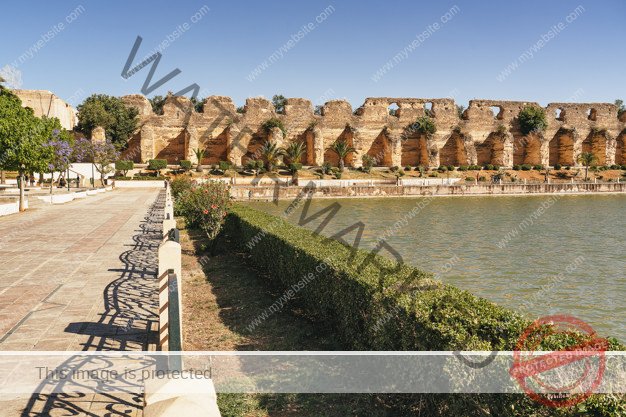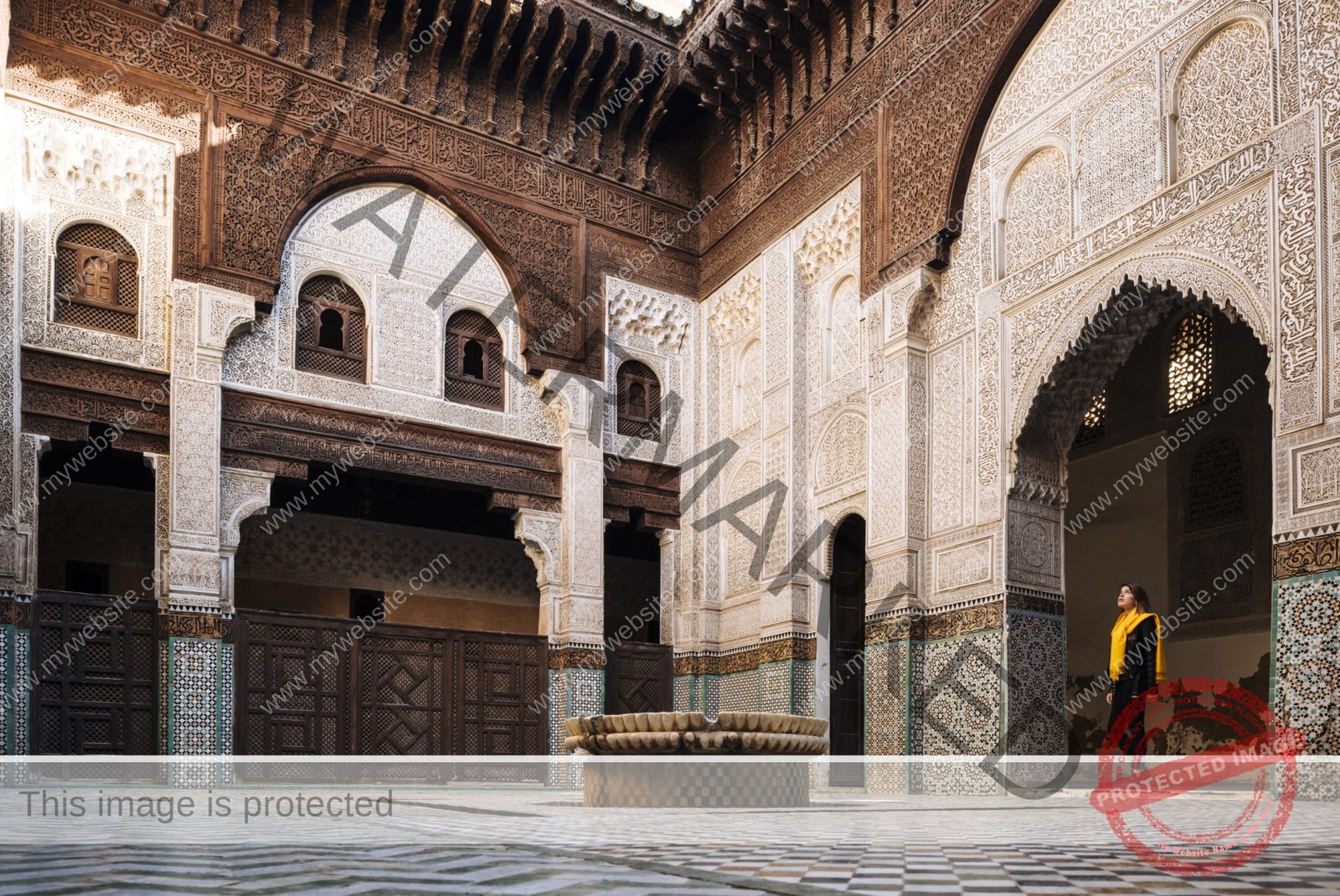Moroccan Ancient Places: Meknes is one of Morocco’s historical, imperial cities and a fascinating place to visit. Many tourist spots will amaze you when you get there. Meknes may not be known as a prominent tourist destination like other cities such as Marrakech and Casablanca. Nevertheless, it deserves to be highlighted as it has a thrilling history and a remarkable heritage. It holds some of Morocco’s most significant legacies.
Advertisement
You will be amazed when you see what’s hiding inside the city. There are many historical buildings with attractive ancient types of architecture. The magnificent designs are greatly influenced by Spanish-Moorish style design. Moreover, the city hosts the Fantasia Festival, one of the country’s biggest festivals.
Moroccan Ancient Places” Top 4 Mysterious Places of the 18th Century In Morocco
- Almoravids founded the city in the 11th century as a military settlement, and in the 17th century, Sultan Moulay Ismail made it the capital and a glorious, vibrant, and prosperous city.
- This imperial city has many architectural treasures and assets in Medina. This will surely attract your attention.
- It is located in the north of the country and is 157 km from Rabat, the capital of Morocco. It is located about 20 km from the Roman remains of Volubilis.
- It is a city of over 600.000 people. Massive ramparts and their captivating gates surround it. It was called “Le Petit Paris” during French colonization.
- Meknes has numerous mosques, which is why it is called “The city of a hundred minarets.”
- It has some of the Arab Andalusian architectural heritage that is vivid wherever you go in the city.
- In 1996, Meknes was recognized as a UNESCO World Heritage site.
Top 4 Mysterious Places of the 18th Century In Morocco: Bab Mansour
Bab Mansour Ihasan is a sight to behold with its breathtaking structure and stunning architecture. This magnificent gate is renowned for its remarkable alternating convex ceramic and concave design, which embellishes a significant portion of the entrance. The intricate patterns and intricate details of the gate’s design are a testament to the skilled craftsmanship of the artisans who built it. The gate’s imposing size and grandeur make it an iconic landmark that is a must-visit for anyone who appreciates great art and architecture.
Some of the other characteristics of the gate are:
- The Bab Mansour gate is a historical landmark located in the city of Meknes, Morocco. It was constructed in the 18th century and is considered to be one of the oldest gates in the country. The gate serves as the main entrance to the imperial palace and is adorned with intricate designs and mosaics. The Bab Mansour gate is a popular tourist attraction and serves as a testament to the rich cultural heritage of Morocco.
- This particular historical artifact was constructed in the year 1732 and has gained international recognition for its exceptional artistic value. It is widely regarded as one of the most exquisite doors in the world, showcasing masterful craftsmanship and artistic talent. The door’s intricate design and attention to detail have made it an iconic symbol of artistic expression throughout history.
- It is considered a giant gate in Morocco and is as high as 16 meters (about 25 feet). It is located opposite the square.
- This remarkable historical masterpiece was crafted by a skilled architect named Mansour Laalej, who happened to be a Christian convert. His design is renowned for its stunning artistic illusion, which continues to captivate viewers to this day. The level of detail and intricacy in the architecture is truly impressive, and it serves as a testament to the creativity and talent of its creator.
- The entrance gate is a sight to behold with its exquisite green and white Zalij designs and intricately engraved Quranic boards. However, as the years have gone by, the once vibrant colors and detailed engravings have gradually begun to fade, losing their former grandeur. Despite this, the gate still stands as a testament to the artistry and craftsmanship of its creators, and a reminder of the rich cultural heritage that it represents.
Top 4 Mysterious Places of the 18th Century In Morocco: Place Lahdim
Place Lahdim creates a very exotic atmosphere for its visitors. It is the place most frequented by tourists and the inhabitants of Meknes. It is indeed a must-see historical place in the city of Meknes.
Here are some facts about this historical place:
- Place Lahdim Square, a place of demolition, used to store tons of rubble. Sultan Moulay Ismail designed it in the years 1672-1674. It is a large, rectangular square 200 meters long and 100 meters wide.
- It is located between Bab Mansour and the Medina of Meknes. It is a large public square located in the heart of the historic city of Meknes near Medina. After it was reconstructed, the square was used as a space for religious, cultural, commercial, and political events.
- It is sometimes called “Jam3a Elfna of Meknes”. It becomes alive in the evening and lights up at night. It is a spacious esplanade and is the social heart of Medina. It hosts all kinds of activities. It hosts street vendors, customers, storytellers, animal showers, and jugglers.
Top 4 Mysterious Places of the 18th Century In Morocco: Kara Prison
This is a historical place to visit, without a doubt. There will be a tour guide that will explain this historical prison more. Here are some facts fascinating facts about Kara prison:
- Kara prison is an underground prison and historical monument. It was established and built at the beginning of the 18th century.
- It is located close to the Moulay Ismail mausoleum in Meknes. It is the largest prison in Morocco,
- It held up to over 40,000 prisoners, according to historians. It is a mysterious prison and is believed to be the only prison with no doors in the world.
- It was designed and created so that its geometry consisted of hallways and complex mazes. Each hall has numerous corridors, and each corridor leads to another entrance. Thus, It is so confusing that finding a way to get out of it without a guide when entering will be hard.
The Top 4 Mysterious Places of the 18th Century In Morocco: The Dar Jamaï
Dar Jamaï has so many historical facts and is an attractive place that deserves visiting:
- The Dar Jamaï Museum was built in 1882, Hispano-Moorish type, as a private residence. In 1920, Dar Jamai became one of the historical museums and muniment in the country.
- Inside, you will see collections dating back to the 19th and 20th centuries. It holds many historical artifacts that connect its visitors to the history of Meknes.
- It has a historical “Minbar,” stepladder furniture in the mosque’s prayer hall. It is where the Imam gives a Friday prayer speech. It is painted and carved wood that dates back to the 17th century.
- The museum has some fascinating handmade carpets from Meknes’s craftsmanship. These historical artifacts reflect the authentic culture of the locals.
- Some of the collections and artworks you will find there are :
Metal, wood, leather ceramic, textile old-style weapons, damask work, embroidery and costumes, copperware, old fashion jewelry, ironwork, woodwork ceramics.
Festival in Meknes
This festival is an all-inclusive event that offers attendees a diverse range of activities and entertainment options. From showcasing exquisite local artifacts and artistic products to conducting informative training workshops and hosting lively street performances, the festival has something for everyone.
Visitors can browse through an impressive display of art and culture, attend interactive workshops to learn new skills and techniques, and witness the city’s vibrant energy through various street performances and live music acts. With so much to see and experience, this festival is undoubtedly one of the year’s most exciting events.
Some Facts About This Festival:
- It hosts the International Festival of Urban Cultures, “Freestyle Maroc Urban Dance,” every year. This festival supports unprivileged and vulnerable children in the city and its surroundings.
- International artists and dancers attend this festival, with up to 800 participants yearly. The participants come from many different countries. These include Belgium, Tunisia, Germany, the United States, Netherlands, Algeria, England, France, Spain, Russia, etc.
- Many international experts are invited to supervise this festival’s various activities. This is to make sure this yearly event is fair and competitive and continues to have global recognition. The supervising experts are from Spain, Belgium, France, Portugal, Germany, Italy and Japan.


